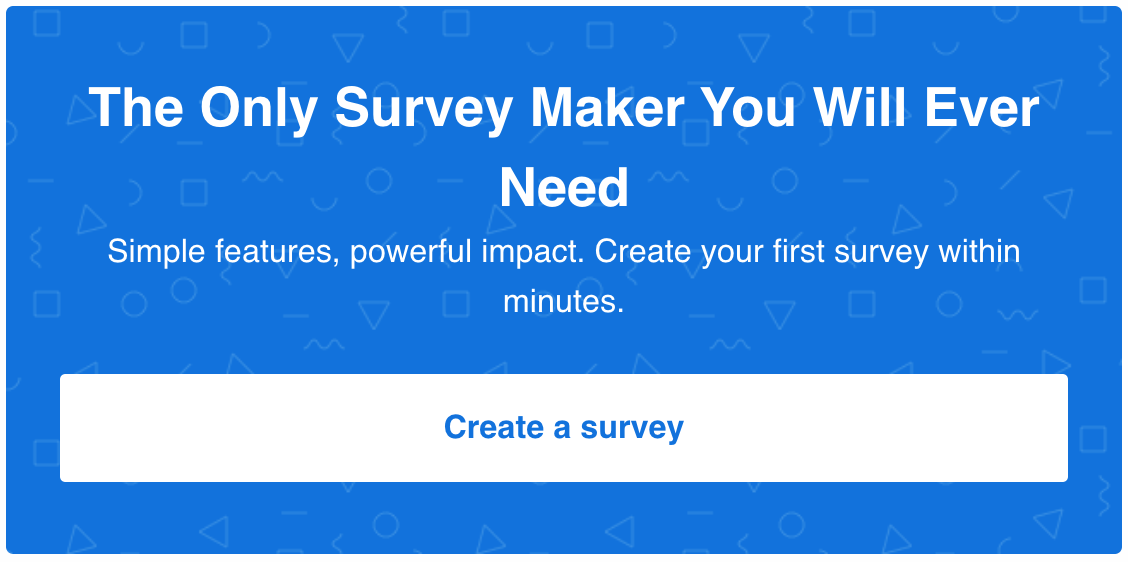Badly formulated questions are the best way to ruin the validity of your survey results.
That’s why you need to know how to recognize and avoid using them in order to get accurate survey results. Or if you’re a survey taker, you need to know how to avoid being manipulated into giving an answer that might not completely reflect your actual opinion.
This is where a double barreled question strikes fiercely.
It’s one of the most commonly encountered bad survey questions. Generally, survey makers are strongly discouraged from using questions with complicated syntax, vague expressions, poor answer options, and – important to us here – “double barrels”.
But before we go into more detail about why it is bad for your surveys and how it may lead to bias in research, let’s first briefly define a double barreled question.
What is a double barreled question?
A double barreled question is one of the most common types of survey fallacy. Whether deliberately or as a result of ignorance or carelessness, such questions often creep their way into surveys and mess up with the accuracy of the results.
It’s a question that asks about more two or more issues but leaves room for just a single answer. Basically, whenever you force people to answer two questions (disguised as one) with a single answer, you’re asking a double barreled question.


This type of question leads to inaccuracies in survey results because the taker can only answer one of the two questions and has no way of indicating which one he has answered. So, if they have a different opinion on the two topics touched upon in the question, there’s room for incorrect interpretation of the answer.
In many cases, you’ll be able to recognize a double barreled question by the presence of the concunction “and”. Of course, this is not an official rule, as this conjunction is present in properly formulated questions.
To make it a bit clearer, I’m going to share a double barreled question example or two.
Double barreled question examples
Double barreled questions can often be found in political surveys, courtroom talk, different kinds of research, and so on.
Here are some examples to make sure you fully comprehend the notion of a double barreled question:
1. How well do you get along with your managers and coworkers?
As you can see above, this question asks about two different things. Even though both managers and coworkers are the people you’re involved with at your workplace, it’s highly likely that you’re going to have a different relation with them because of different position in the workplace hierarchy.
That being said, it would be much better and more accurate to ask two separate questions:
- How well do you get along with your managers?
- How well do you get along with your coworkers?
2. How pleased are you with your salary and work environment?
The same as above. Someone could be satisfied with their salary but still hate going to work because of the toxic work environment. So, again, for reliable answers and accurate results, it’s better that you avoid a double barreled question and ask two separate questions:
- How pleased are you with your salary?
- How pleased are you with your work environment?
3. How satisfied are you with the LeadQuizzes app and customer support?
We at LeadQuizzes would really like to know what you think about our app and our customer support. That’s why we would never use a double barreled question like this one in our customer satisfaction survey.
In order to get a precise and honest answer from our customers, we would divide the question above into two:
- How satisfied are you with the LeadQuizzes app?
- How satisfied are you with the LeadQuizzes customer support?
4. Should the government create more jobs and ban guns?
As already mentioned, this kind of questions is often found in political surveys, where political representatives are abusing double barreled questions to create a false image of the public opinion and use it for their political propaganda.
Let’s imagine you want the government to create more jobs but are a strong opponent of the no guns policy. How would you answer the question above? Clearly, those should be two separate questions:
- Should the government create more jobs?
- Should the government ban guns?
5. Is this quiz funny and educative?
Even though both adjectives describing the quiz (“funny” and “educative”) are essentially positive, they are still not interchangeable. In other words, something can be funny and not teach you a thing, while things that educate are not funny at the same time. (Our quizzes are. Word.)
Still, to get an accurate answer and avoid messing up your survey results, you need to split the question into two:
- Is this quiz funny?
- Is this quiz educative?
6. I buy strawberries and cherries.
- Always
- Frequently
- Sometimes
- Never
The question above is based on a Likert scale that measures frequency. The obvious problem with it is that it asks about two different kinds of fruit (“strawberries” and “cherries”) but leaves just one answer option.
So, let’s say you answer with “frequently”. What does that mean? That you frequently buy both of those together. But if you buy just strawberries and not cherries, there’s no accurate way to answer this question.
This question could be rephrased into “How often do you buy fruit?” but that way you’re surveying on a much broader topic. Another solution is the same one as above – split the double barreled question into two separate ones.
Other types of questions to avoid in your surveys
In addition to double barreled questions, there’s a whole specter of questions you should avoid using in your surveys in order to get unbiased and accurate results.
Here are some of the most common ones.
Leading questions
Leading questions use biased language to nudge a survey taker toward a particular answer option. The main problem with those is that they might seem innocuous, but actually have the purpose of tampering with the accuracy of survey findings.
In addition to questions, answer options can be leading too. Imbalanced answer options (for example, more positive choices than the negative ones) can serve the purpose of leading the taker towards a particular answer.
Leading question example:
Did you enjoy our new amazing offer?
Confusing questions
Unlike leading questions, which are in most cases a result of the malicious intent of the survey maker to manipulate the takers, confusing questions may just be poorly worded or illogically formatted.


Confusing question example:
Do you think our customer support team was not unhelpful or did they solve your issue?
Ambiguous questions
Ambiguous questions are either too broad or not specific enough. That being said, such questions often leave room for free interpretation, thus leading the takers to guess what the question maker meant and probably leading to unreliable answer data.
Ambigouous question example:
If a man plays his brother at chess and he’s a grandmaster, is he likely to win? (It’s ambiguous who the grandmaster is, isn’t it?)
Assumptive questions
In assumptive questions, the survey creator assumes that the taker is already familiar with something and disregards the fact that the question might not be applicable to that taker or that they might need an additional explanation.
Assumptive question example:
When you do yoga, what’s your favorite position? (It assumes that the taker actually does yoga.)
Conclusion
Quality survey questions need to be written in such a way that it’s completely clear what’s being asked and what kind of answer is being expected. In relation to double barreled questions, it’s important that each survey question measures one thing and one thing only.
If you need help coming up with different survey question types, check out our guides on how to write quality demographic or personality questions.
If you need a tool that enables you to create engaging and beautifully designed surveys, click on the image below and try the LeadQuizzes survey maker for FREE!
